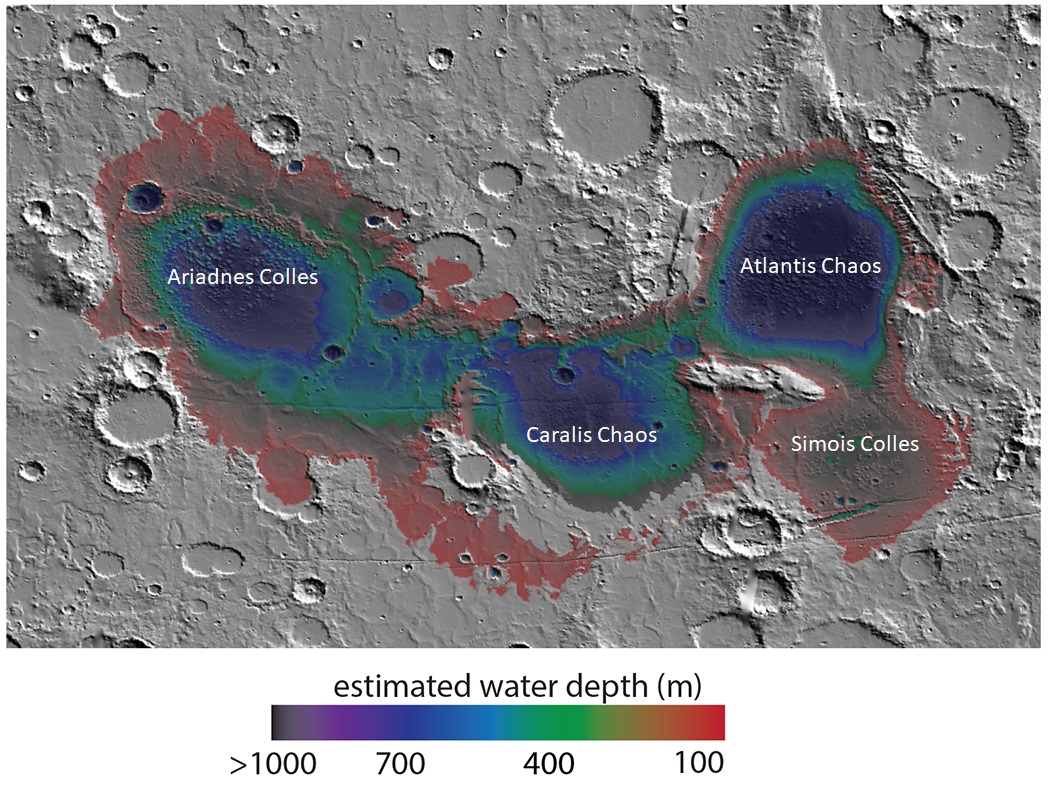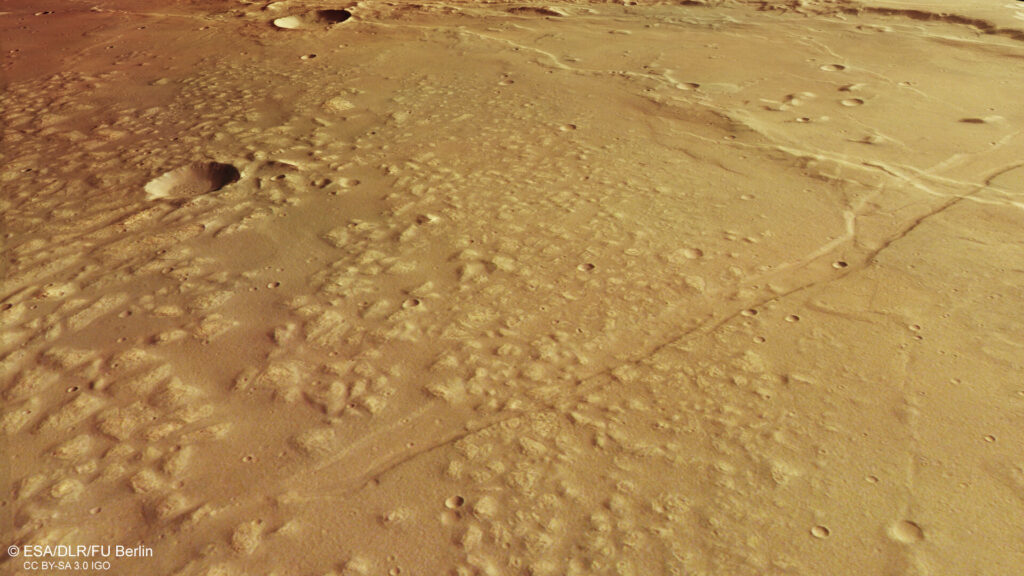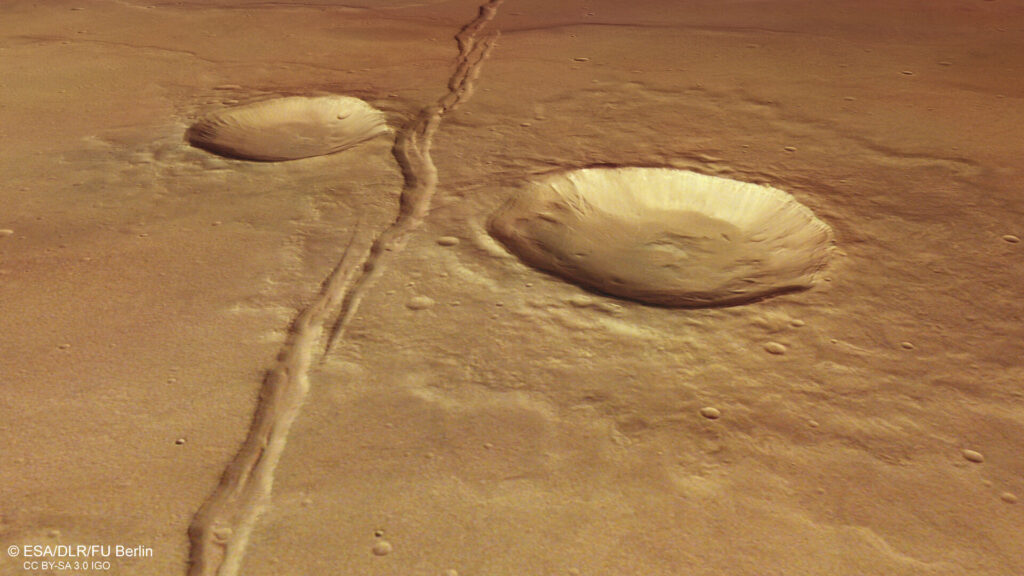The European Space Agency has published images taken by the Mars Express spacecraft. They depict a region called Caralis Chaos. According to scientists, it was once home to the largest Martian lake.
Mars’ largest lake
Mars wasn’t always a desolate and dust-covered world. In the distant past, streams of water flowed across the planet’s surface to form permanent bodies of water. In the distant past, streams of water flowed across the planet’s surface to form permanent bodies of water. The largest of these was Lake Eridania, which existed 3.7 billion years ago.

At that time, Lake Eridania covered an area of more than a million square kilometers. It held more water than all other Martian lakes combined, as well as any of the modern lakes on Earth. Its water could fill the Caspian Sea three times.

As the Martian climate changed, Lake Eridania began to shrink in size. It gradually broke up into a series of small lakes, which then dried up completely.
Craters and volcanic activity
The place where Lake Eridania once existed has changed a lot since then. Mars Express images show what it looks like today. The bottom of the former reservoir is now the site of many elevated embankments.

The images also show signs of volcanism. The Mars Express image crosses two long fractures known as the Sirenum Fossae faults. Their formation is associated with the formation of the province of Tharsis, a giant highland that is home to the largest volcanoes in the Solar System.

Volcanic activity has also influenced the formation of numerous wrinkled ridges. They look like curved lines crossing the frame horizontally. Wrinkled ridges are often found on volcanic plains, formed when the surface is compressed.

The landscape at the site of the former lake was also affected by space bombing. The large central crater shows evidence of flowing material and channels cut into its shaft. This indicates that water may have existed there even after the disappearance of Lake Eridania.
Earlier we told you about how NASA would act in the event of astronauts dying on the Moon or Mars.
According to ESA


